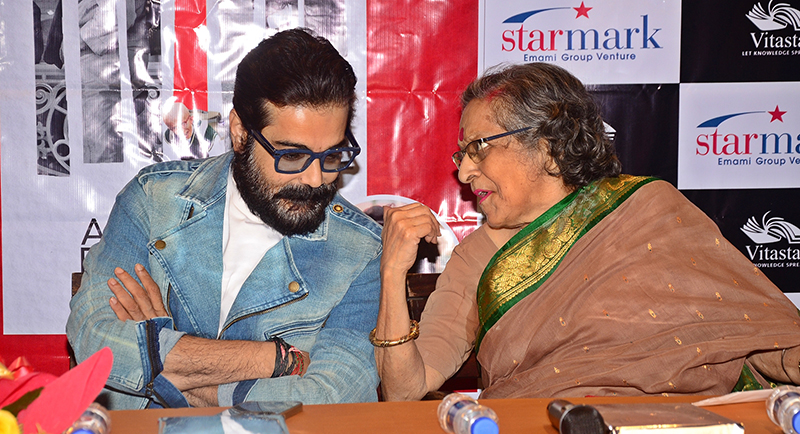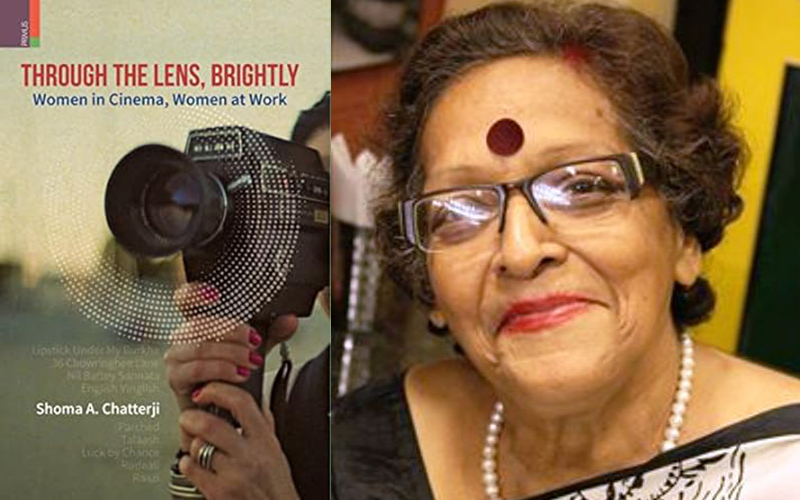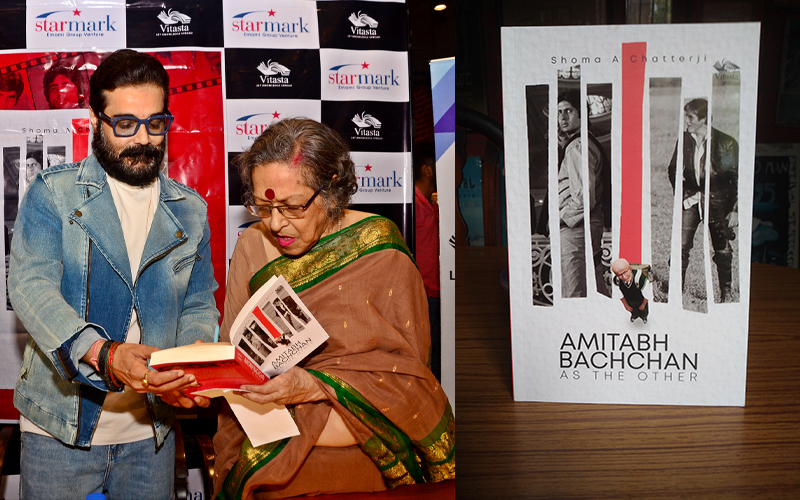
The ‘other’: An author examines
Award-winning film critic and author Shoma A. Chatterji examines the ‘other’ in her two recent books with an insightful look at the world of Indian cinema. In a tete-a-tete with Ranjita Biswas
In your recent book Amitabh Bachchan as the Other, you have talked about the actor as a rebel against social ills. But his image as an angry young man is well-documented. What new dimension have you brought to the interpretation?
I have tried to prove that there is much more in him than just ‘the angry young man’. I feel that his portrayals in the 15 films chosen for analysis in my book moves beyond this image. Also, if he adhered just to the limiting label of ‘the angry young man’, would he have survived in the fickle film industry for around five decades or more? I wanted to liberate him from this constant tag of the ‘angry young man.’
Do you feel that as society changed this image of Bachchan became blurred as hits at the box office told other more romantic, easy-going stories that the audience preferred ?
No, I do not agree. The image of Bachchan became blurred because he was portraying the hero when he was past the age of the conventional hero and the audience hesitated to accept him as hero opposite heroines fit to portray his daughter. Shahenshah is a good example of this. The same goes for Agneepath
In your earlier book Through the Light, Brightly, you deal with another ‘other’ if we can say so- of women in cinema
Yes. Through that book, it is automatically proven that women are the ‘other’ within the film industry because in terms of numbers, they form a fraction of male directors right across the world. In this sense, they are definitely ‘the other’ in our industry. As they are small in number, the representation of their work is much lower than those of their counterparts and therefore, less spread in global cinema and in theatrical releases.
 Images by Avishek Mitra / IBNS
Images by Avishek Mitra / IBNS
While looking at ‘women at work’ as perceived by women directors in Indian cinema, what struck you most?
From the films I selected for this book, I discovered quite by surprise that the working women in the films I analysed represented a multiple of occupations not generally observed in the ‘usual’ social life or even mainstream cinema. For example, if in Rudali she is a professional mourner, then in Raazi she is a secret agent driven to the profession by her own father. In Lipstick Under my Burkha, each of the four women portrayed represent a microcosm of women who live in small towns like Bhopal where the landlady of an old house which has survived the dreadful gas tragedy in Bhopal has sexual fantasies springing from a book she is reading, a brutally abused housewife whose husband has a woman on the side finds her own métier as a very successful marketing and sales person but she hides this occupation from her husband.
In Parched, the Rajasthani women work while the men do nothing other than beating up their wives and robbing them of their money. In Talaash, the protagonist is a sex worker who points out that since a person like her has no proof of her existence via a ration card, voter ID card, or even a birth certificate, her death is also invisible; no cares because no one knows that she actually was once a living human person. In English-Vinglish, the wife who is constantly subjected to humiliation and insult from her husband and elder daughter because she cannot speak English fluently, learns to speak English fluently during a short holiday in the US but her aim is only to rise in stature in the eyes of her husband and daughter.
 Images by Avishek Mitra / IBNS
Images by Avishek Mitra / IBNS
Is there gender stereotyping when it’s thought that women directors bring an extra layer of sensitivity in portrayal of female characters? Because male directors can be equally sensitive in this aspect; there is a surfeit of examples as you know
I don’t agree with this premise at all, at least in Indian films. This I have studied in detail for my next book The Male Gaze – Redefined, which counters feminist film theorist Laura Mulvey’s notion of the male gaze objectifying the women within the cinematic and narrative frame. Mulvey believes that male directors, editors, script writers and cinematographers use the women in the frame as an ‘object’ of titillation, sensationalism and so on. She also puts forth the presumption that the audience is mainly male which is not correct. This doesn’t work in the case of Indian cinema because down the years male directors in India have portrayed women not as objects but as important subjects of their films even when the character happened to be a sex worker. Look at Bimal Roy’s Sujata, Mehboob Khan’s Mother India, Gulzar’s Aandhi, Guru Dutt’s Pyaasa, Buddhadeb Dasgupta’s Andhi Gali, Satyajit Ray’s films, Mrinal Sen, Ritwik Ghatak, Shyam Benegal, Govind Nihalani and Tapan Sinha’s films- we can go on.
In the book you have concentrated on feature film makers but some of the best Indian documentaries today are made by women directors, going up to the Oscars
I chose this subject because I noticed from my research that this was virgin territory so far as women directors directing feature films are concerned whereas women documentary makers are being written about now and again. I myself dedicated an entire chapter on women documentary filmmakers in my book From Real to Reel – the Independent Documentary Film in India (SAGE ). Even now, I have plans to do a detailed book on ten notable women documentary filmmakers in India but the directors have not responded very well – yet.
Support Our Journalism
We cannot do without you.. your contribution supports unbiased journalism
IBNS is not driven by any ism- not wokeism, not racism, not skewed secularism, not hyper right-wing or left liberal ideals, nor by any hardline religious beliefs or hyper nationalism. We want to serve you good old objective news, as they are. We do not judge or preach. We let people decide for themselves. We only try to present factual and well-sourced news.







